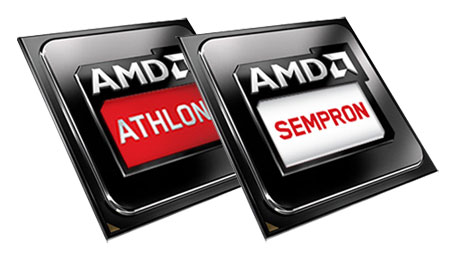Our Aim
To provide you with an overview on New And existing technologies, hopefully helping you understand the changes in the technology. Together with the overviews we hope to bring topical issues to light from a series of independent reviewers saving you the time And hassle of fact finding over the web.
We will over time provide you with quality content which you can browse and subscribe to at your leisure.
TekSpek 's

AMD AM1 Kabini APUs
Date issued:
AMD invigorated its desktop Accelerated Processing Unit (APU) lineup recently with the launch of Kaveri parts presented in an FM2+ form factor. Designed to take over from previous Richland and Trinity APUs, these new chips brought the Steamroller core and GCN graphics to play for the first time on the desktop.
Yet Kaveri isn't the first AMD APU to bake GCN graphics into the die. That honour goes to the embedded and laptop-bound Kabini and Temash APUs released last year. Not only that, Kabini also uses low-power Jaguar CPU cores instead of variants of the Piledriver architecture routinely found on desktop APUs.
Kabini chips are APUs in their broadest meaning; they integrate everything into the silicon, including CPU, GPU, I/O, and memory controller. System-on-chip (SoC) is a better term for explaining their design, which makes sense as they go into space- and thermally-restricted environments.
The reason for talking about Kabini in reference to desktop rests squarely with AMD's decision to make these small, low-cost APUs available in socketed desktop form, representing a big deal for system integrators looking to produce inexpensive, feature-rich PCs that are, to an extent, also upgradeable.
AMD's premise is to enable cheaper desktop PCs that still retain full-architecture compatibility with Windows and x86 software. Four socketed Kabini chips and a raft of supporting motherboards are to be made available from today.
Specification
| APU Model | CPU Cores |
CPU Clock (MHz) |
GPU Brand |
GPU Cores |
GPU Clock (MHz) |
Max. DDR3 (MHz) |
TDP (watts) |
Launch Price (US 1ku) |
|
|---|---|---|---|---|---|---|---|---|---|
| 28nm Kabini | |||||||||
| Athlon 5350 | 4 |
2,050 |
Radeon R3 |
128 |
600 |
1,600 |
25 |
$59 |
|
| Athlon 5150 | 4 |
1,600 |
Radeon R3 |
128 |
600 |
1,600 |
25 |
$49 |
|
| Sempron 3850 | 4 |
1,300 |
Radeon R3 |
128 |
450 |
1,600 |
25 |
$39 |
|
| Sempron 2650 | 2 |
1,450 |
Radeon R3 |
128 |
450 |
1,333 |
25 |
$35 |
|
AMD resurrects the Athlon and Sempron branding for Kabini-powered APUs. The Athlon duo and Sempron 3850 all use a quad-core Jaguar CPU configuration in concert with Radeon R3 (GCN) Graphics that are home to two compute units (CUs), totalling 128 cores. The Sempron 2650, meanwhile, uses two CPU cores but retains the full complement of R3 Graphics.
Two characteristics are immediately obvious: they're cheap and they suck on a maximum 25W for the entire SoC. The Kabini architecture can only address memory in single-channel mode, at speeds of up to 1,600MHz, mind, and this will impact upon the potential of the integrated graphics.
Though patently not as powerful as the Kaveri desktop APUs, the feature set is bang up to date. Kabini has DX11.2-class graphics, support for 64-bit computing, a video codec engine and universal video decoder that's on a par with Kaveri, and ability to export to two displays through a choice of HDMI, DisplayPort 1.2, DVI or VGA. Two USB 3.0 ports, eight USB 2.0, and two SATA 6Gbps keeps storage current, as well.

Here's the Athlon 5350 Kabini alongside the A10-7850K Kaveri APU. A smaller die and fewer routing pins means AMD can use a more compact package that makes implicit sense when motherboard real estate is likely to be a premium on mITX boards. AMD isn't divulging die sizes at this moment in time, suffice to say that four Jaguar cores can fit inside one dual-core Steamroller unit found in Kaveri.
AM1 platform, value and performance
The combination of socketed Kabini APU and FS1b is now referred to as the AM1 platform or package, and motherboard partners have already released a roster of compatible boards. AMD says it has a roadmap that defines the next generation of low-power APUs that will use this AM1 platform, staring with the 'Beema' platform next year.
Consider these AM1 APUs as scaled-down versions of Kaveri, albeit using a different CPU core architecture. AMD expects the cheapest APU-and-motherboard combinations to come in at around $60, with the best at comfortably below $100.
One obvious reason why AMD is keen to roll out these low-priced, low-power, user-upgradeable platforms is because it spies a gap in the market. Intel's price-comparable platform is composed of either Pentium- or Celeron-powered Bay Trail chips pre-soldered onto the board or, stretching it further, LGA1150-based Pentium G-series processors that have higher TDPs. The remainder of the Haswell range of CPUs occupy a higher pricing spectrum.
Independent testing from reputable review websites shows that the Athlon 5350 is a fine processor for a low-cost build. The Jaguar CPU cores are potent enough to drive everyday applications with ease, while the Radeon graphics core provides a flexible array of outputs and, while not a true gaming-grade GPU by any stretch of the imagination, is strong in multimedia video playback.
AMD AM1 APUs and motherboards enable capable little systems that are suited for a wide range of environments, from powering media centre PCs to large-scale office deployment.
The real boon is the price, as these APUs and supporting AM1 motherboards start at £25 a pop, rising to £40 for the premium models. Evaluated in context of the price and market positioning, there really is not a lot to dislike
As always, Scan Computers has a wide range of AMD AM1 APUs and motherboards.